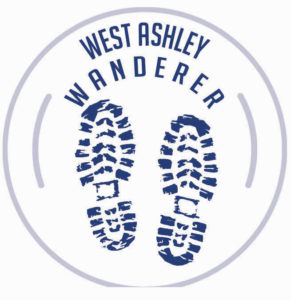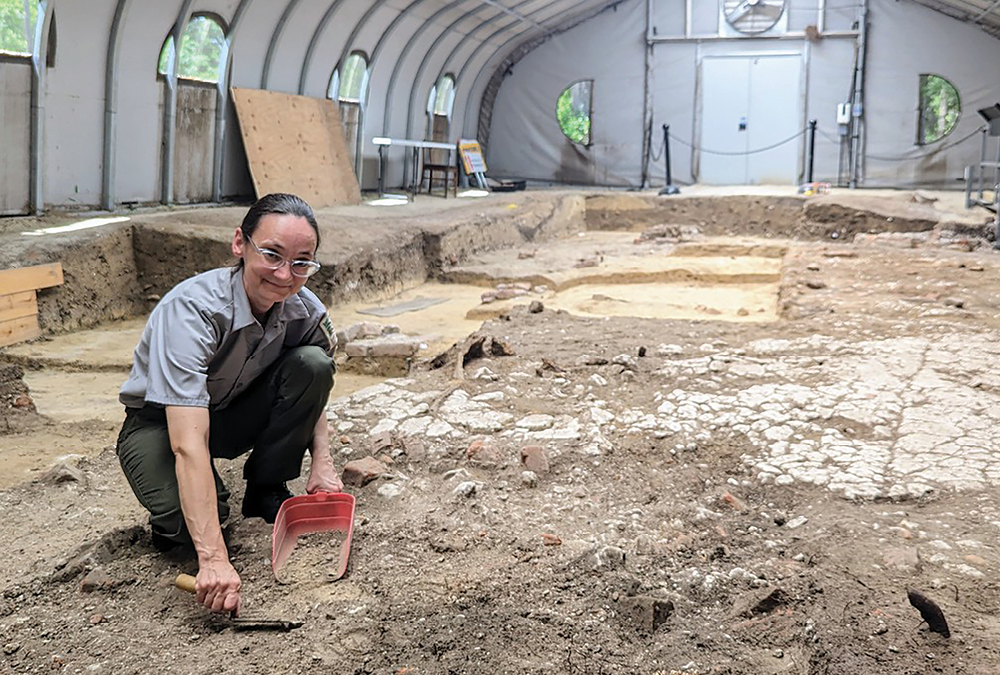Charles Towne Landing is a hotbed of history right in our backyard
by Joan Perry | Contributing Writer
 My weekly walk along the nature paths at Charles Towne Landing takes me by the excavation tent and I’ve often tried to peek in the windows. Staff archaeologist Nicole Isenbarger met me there to explain what they were discovering.
My weekly walk along the nature paths at Charles Towne Landing takes me by the excavation tent and I’ve often tried to peek in the windows. Staff archaeologist Nicole Isenbarger met me there to explain what they were discovering.
Growing up in a military family, Isenbarger has lived throughout the United States and Europe and was fascinated by the variety in cultures. She was grateful for teachers who brought history to life through archaeology and visiting local historical sites and considered it a win when she discovered she could make a career of it. She did her undergraduate studies at the College of Charleston and earned her Masters in Anthropology at the University of South Carolina. Isenbarger became the archaeologist at Charles Towne Landing in 2015, but had been part of the earlier 2000-2001 archaeological excavations directed by Stanley South & Michael Stoner -through the South Carolina Institute for Archeology & Anthropology (SCIAA).
English settlers landed at Charles Towne Landing in 1670 and in 1671, 2 – 4 acre private lots were granted to create a town. The assumption has been that in the early years of the colony they lived in simple wooden buildings and didn’t really create a town with permanent structures until relocating the settlement to the peninsula where modern-day Charleston is now located.
Recent discoveries show that they probably did build a town! Current excavations have uncovered brick foundations and a fireplace, a poured lime floor, and numerous artifacts associated with late 17th century, possibly located within the private town lots. The site was occupied in the late 17th century and then appears to have been abandoned by the beginning of the 18th century.
Bricks were a big deal and costly building material that was often reused. Despite the short period of time this site was used, these buildings were modified and changed. Rubble under the lime floor suggests an earlier structure that predates the lime floor. Each brick maker had their own unique recipe that researchers can identify using scientific techniques like X-ray fluorescence spectroscopy. Recent studies have identified three distinct brick formulas, this information is helping them figure out the different occupation phases at the site.
The clearly visible lime floor is the oldest example of a poured lime floor in the southeastern United States. Lime floors and plaster walls were often used to reduce humidity and repel pests and we often see them in kitchens, dairies and even wineries. We aren’t sure what the function of this building was just yet, but numerous wine-making artifacts have been found including pieces of glass goblets, wine bottles and ceramic tankards. Were our early English settlers vintners or perhaps coopers that made wine-barrels?
Pretty jagged bits of flat aqua and olive green glass, no longer opaque, let us know that the buildings had multi-paned glass windows. Isenbarger had a box of artifacts to show me that included English Delft, German Stoneware, Chinese porcelain and pieces of Colonoware, a low-fired earthenware crafted by the enslaved Africans.
These exciting and continuing findings suggest that the current excavation site is that of established town lots with formal structures, and active trading, rather than basic wooden cabins.
Interested in more? Check the website at https://southcarolinaparks.com/charles-towne-landing/ for current hours of site visitation and programs.








